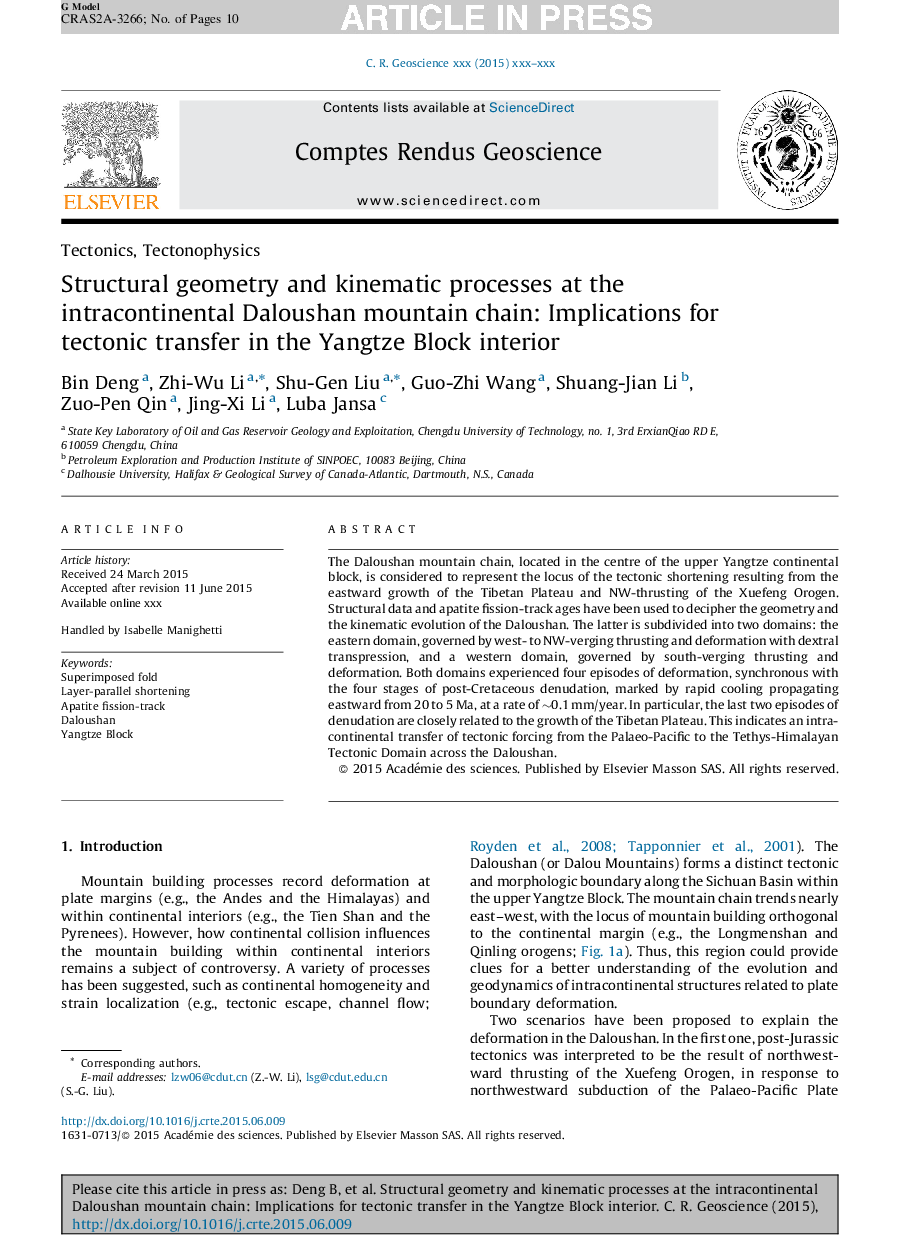| Article ID | Journal | Published Year | Pages | File Type |
|---|---|---|---|---|
| 6347823 | Comptes Rendus Geoscience | 2016 | 10 Pages |
Abstract
The Daloushan mountain chain, located in the centre of the upper Yangtze continental block, is considered to represent the locus of the tectonic shortening resulting from the eastward growth of the Tibetan Plateau and NW-thrusting of the Xuefeng Orogen. Structural data and apatite fission-track ages have been used to decipher the geometry and the kinematic evolution of the Daloushan. The latter is subdivided into two domains: the eastern domain, governed by west- to NW-verging thrusting and deformation with dextral transpression, and a western domain, governed by south-verging thrusting and deformation. Both domains experienced four episodes of deformation, synchronous with the four stages of post-Cretaceous denudation, marked by rapid cooling propagating eastward from 20 to 5Â Ma, at a rate of â¼0.1Â mm/year. In particular, the last two episodes of denudation are closely related to the growth of the Tibetan Plateau. This indicates an intra-continental transfer of tectonic forcing from the Palaeo-Pacific to the Tethys-Himalayan Tectonic Domain across the Daloushan.
Keywords
Related Topics
Physical Sciences and Engineering
Earth and Planetary Sciences
Earth and Planetary Sciences (General)
Authors
Bin Deng, Zhi-Wu Li, Shu-Gen Liu, Guo-Zhi Wang, Shuang-Jian Li, Zuo-Pen Qin, Jing-Xi Li, Luba Jansa,
